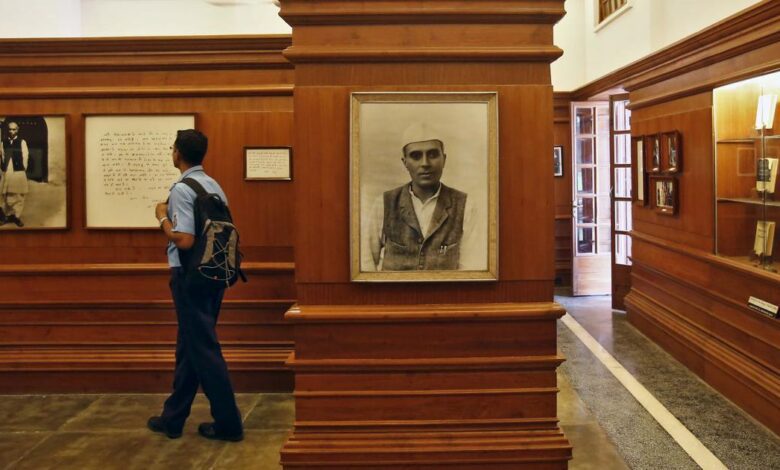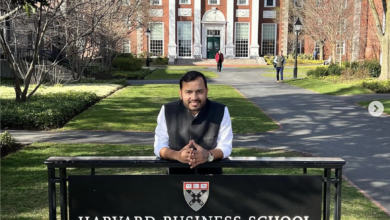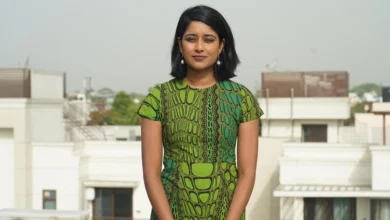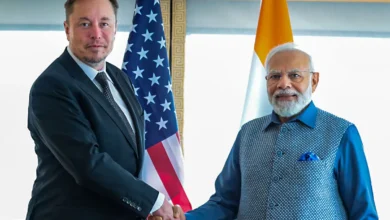Renaming controversy: Nehru Memorial Museum becomes Prime Ministers’ Museum
Sharp reactions and legacy debate surrounds the name change decision.

In a move that has stirred intense debate and garnered sharp reactions, the Indian government has renamed the prestigious Nehru Memorial Museum and Library Society, situated in Teen Murti Bhavan premises, as the Prime Ministers’ Museum and Library Society. The decision has drawn strong criticism from the opposition Congress party, which denounced it as a “petty act” and raised concerns about preserving historical legacies.
The decision to rename the institution comes nearly a year after the inauguration of the Pradhanmantri Sangrahalaya, a museum dedicated to showcasing the contributions of all Prime Ministers of India, including the iconic first Prime Minister, Jawaharlal Nehru. The idea for this museum, located within the Teen Murti Bhavan complex that houses the Nehru Memorial Museum and Library (NMML), was first proposed by Prime Minister Narendra Modi, who also serves as the President of the NMML Society.
he Executive Council, NMML, had in its 162nd meeting held on November 25, 2016, approved the construction of the museum dedicated to all Prime Ministers in the Teen Murti Estate. The project was completed and the “Pradhanmantri Sangrahalaya” was thrown open to the public on April 21, 2022.
During a special meeting of the Nehru Memorial Museum and Library Society, presided over by Defence Minister Rajnath Singh, it was unanimously decided to change the institution’s name. The Ministry of Culture explained that the new name was chosen to reflect the expanded activities of the museum, which now includes the portrayal of the collective journey of democracy in independent India, highlighting the contributions of every Prime Minister in nation-building.
“The Executive Council subsequently felt that the name of the Institution should reflect the present activities which now also include a Sangrahalaya depicting the collective journey of democracy in independent India and highlighting the contribution of each Prime Minister in nation-building. The Museum is a seamless blend which begins at the renovated and refurbished Nehru Museum building, now completely updated with technologically advanced displays on the life and contribution of Shri Jawaharlal Nehru. Housed in a new building, the museum then goes on to tell the story of how our Prime Ministers navigated the nation through various challenges and ensured all-round progress of the country. Thus, it recognizes all the Prime Ministers, thereby democratizing the institutional memory”, the press release stated.
In his address at the meeting, Defence Minister Rajnath Singh expressed support for the proposal, emphasizing the need to represent the diverse experiences and accomplishments of all Prime Ministers, comparing their tenures to the vibrant colors of a rainbow. Singh stated that the resolution to rename the institution is a testament to the respect accorded to all the previous Prime Ministers and signifies a democratic approach.
However, the Congress party swiftly criticized the decision, branding it as an act of “vengeance” and asserting that legacies cannot be erased by renaming buildings. Jairam Ramesh, the Congress general secretary in-charge of communications, condemned the move, stating, “Pettiness & Vengeance, thy name is Modi.” He highlighted the Nehru Memorial Museum and Library’s rich history as a global intellectual landmark and treasure trove of knowledge.
Congress members, including K C Venugopal, the Congress general secretary (organisation), and Manish Tewari, a Congress MP, echoed these sentiments, underscoring Nehru’s pivotal role in India’s post-independence journey and criticizing the decision to alter the name of the institution.
Congress general secretary (organisation) K C Venugopal said the Teen Murti Bhavan is a historic monument where India’s destiny was crafted. “The architect of India’s post-independence glory was our first PM Jawaharlal Nehru. Erasing his legacy by changing the name of the Nehru Memorial Museum and Library is a petty act, which only further diminishes the stature of the current regime,” Venugopal said on Twitter. “India’s every success is achieved on the foundation of Nehru ji’s vision. India knows that, and removing his name from a museum will not change the revered stature that Nehru ji enjoys in every Indian’s heart,” he said.
Amidst the controversy, Chairman of the Executive Council, Nripendra Misra, explained the rationale behind the name change, emphasizing that the new name aligns with the institution’s present activities. Misra highlighted that the updated museum seamlessly blends Nehru’s contributions, displayed in the renovated Nehru Museum building, with the narrative of how successive Prime Ministers navigated challenges and fostered the nation’s progress. He argued that the name change democratizes the institutional memory by recognizing the achievements of all Prime Ministers.
The Teen Murti Bhavan, originally built during the British era, served as Jawaharlal Nehru’s official residence after India’s independence. It was subsequently converted into a memorial on Nehru’s 75th birthday in 1964, housing a museum and library to promote intellectual inquiry. The Nehru Memorial Museum and Library Society, an autonomous body established on April 1, 1966, oversees the functioning of the institution.
This contentious decision to rename the Nehru Memorial Museum and Library reflects the ongoing debate in India surrounding the preservation of historical legacies, the recognition of Prime Ministers’ contributions, and the role of institutions in shaping collective memory



